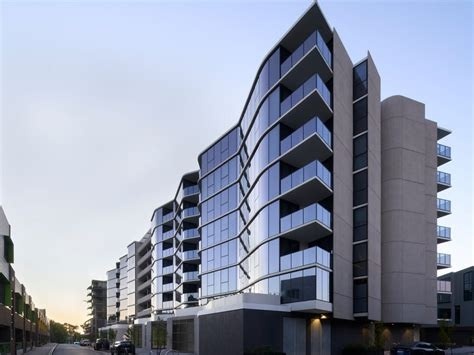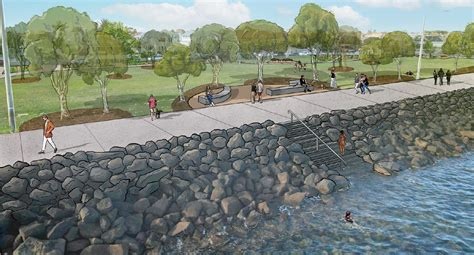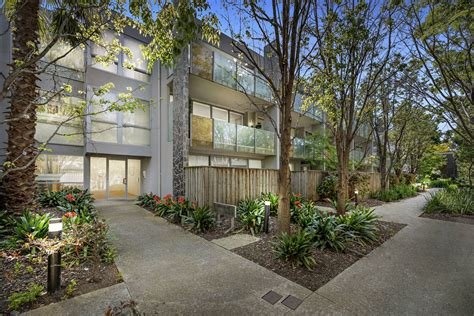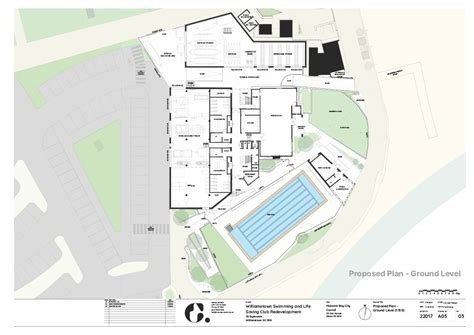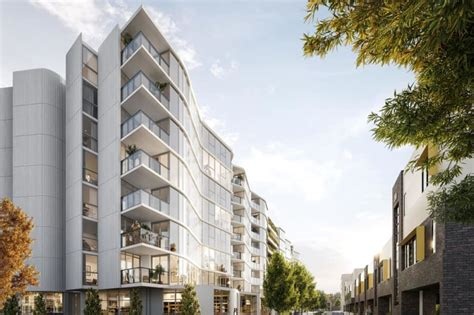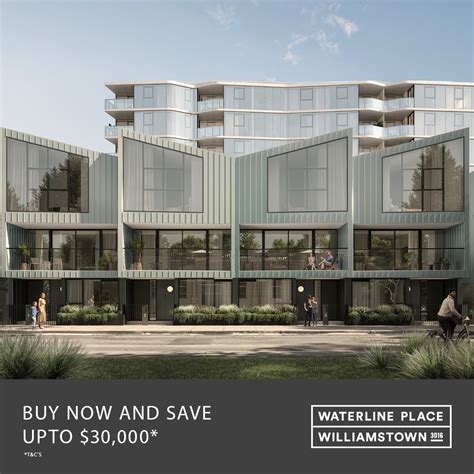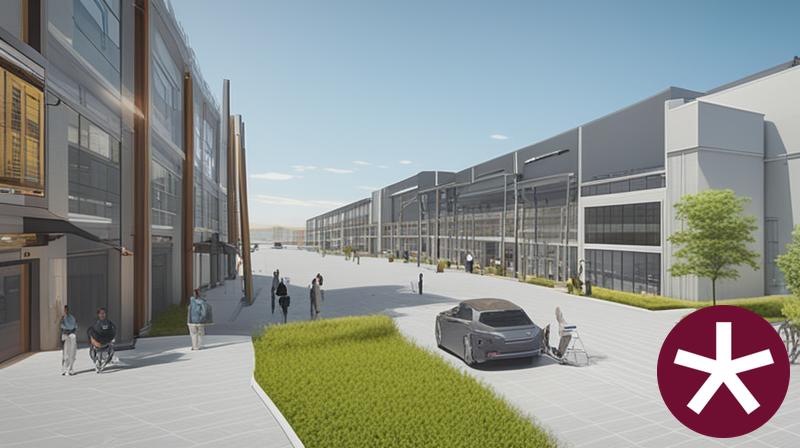Chart Color Schemes
est. as @ -- *
ABS ERP | -- people | --
2021 Census | -- people
Sales Activity
Curious about local property values? Filter the chart to assess the volume and appreciation (including resales) trends and regional comparisons, or scroll to the map below view this information at an individual property level.
Find a Recent Sale
Sales Detail
Population
Williamstown has seen population growth performance typically on par with national averages when looking at short and medium term trends
Williamstown's population is approximately 17,626 as of August 2025. This figure reflects a growth of 1,714 people since the 2021 Census, which reported a population of 15,912. The increase is inferred from the estimated resident population of 16,929 in June 2024 and an additional 523 validated new addresses since the Census date. This results in a population density ratio of 2,398 persons per square kilometer, placing Williamstown in the upper quartile nationally according to AreaSearch's assessment. The area's growth rate of 10.8% since the 2021 census exceeds both the SA3 area average (7.0%) and the national average. Overseas migration contributed approximately 90.5% of overall population gains during recent periods, driving this growth.
AreaSearch uses ABS/Geoscience Australia projections for each SA2 area, released in 2024 with a base year of 2022. For areas not covered by this data, AreaSearch utilises the VIC State Government's Regional/LGA projections from 2023, with adjustments made using weighted aggregation methods from LGA to SA2 levels. Growth rates by age group are applied across all areas for years 2032 to 2041. Future population trends project an above median growth rate nationally, with Williamstown expected to grow by 2,998 persons to 2041 based on the latest numbers, reflecting a total increase of 13.0% over the 17-year period.
Frequently Asked Questions - Population
Development
Residential development activity is lower than average in Williamstown according to AreaSearch's national comparison of local real estate markets
Williamstown has seen approximately 142 new homes approved each year. Development approval data is produced by the Australian Bureau of Statistics on a financial year basis. Over the past five financial years, from FY20 to FY25, around 714 homes were approved with one approval recorded so far in FY26. On average, over these five years, only about 0.2 people moved to Williamstown for each dwelling built, indicating that new construction is matching or outpacing demand.
This offers buyers more options and enables population growth beyond current expectations. The average value of new properties constructed is $644,000, slightly above the regional average, suggesting a focus on quality developments. In FY26, $21.7 million in commercial development approvals have been recorded, indicating steady commercial investment activity in Williamstown. Compared to Greater Melbourne, Williamstown records about 67% of building activity per person but places among the 30th percentile of areas assessed nationally, offering more limited choices for buyers and supporting demand for existing homes. New building activity shows that approximately 17.0% of dwellings approved are detached houses while around 83.0% are medium and high-density housing.
This shift towards denser development provides accessible entry options appealing to downsizers, investors, and entry-level buyers. This represents a notable change from the area's existing housing composition, currently at 54.0% houses, reflecting decreasing availability of developable sites and changing lifestyles. With around 586 people per dwelling approval, Williamstown reflects a highly mature market. Population forecasts indicate that Williamstown will gain approximately 2,292 residents by the year 2041. At current development rates, new housing supply should comfortably meet demand, providing good conditions for buyers and potentially supporting growth beyond current population projections.
Frequently Asked Questions - Development
Infrastructure
Williamstown has strong levels of nearby infrastructure activity, ranking in the top 30% nationally
Changes to local infrastructure significantly influence an area's performance. AreaSearch identified 23 projects likely to impact the area. Key projects include Workshops Pier Repairs Project, Williamstown Mechanics Institute Masterplan and Restoration, Waterline Place, and Williamstown Swimming and Life Saving Club Redevelopment. The following list details those most relevant.
Professional plan users can use the search below to filter and access additional projects.
INFRASTRUCTURE SEARCH
Frequently Asked Questions - Infrastructure
Workshops Pier Repairs Project
The Workshops Pier Repairs Project involves strengthening the piers foundation by installing new steel piles and beams, and making minor repairs to the concrete deck and abutment. It aims to restore berthing and structural capacity, ensure safety, and extend the piers lifespan, which is part of a $46 million Victorian Government investment in critical pier infrastructure. The pier, managed by the Seaworks Foundation, is a key berthing site for tall ships and small commercial vessels in Melbourne.

Williamstown Mechanics Institute Masterplan and Restoration
Council-led heritage restoration and adaptive reuse of the Williamstown Mechanics Institute. A masterplan process running through 2025 is testing future uses and investment options for the hall, reading room and associated buildings. Early works include restoring the caretaker's cottage, while the main complex remains closed pending funding and final design outcomes.

Newport Level Crossing Removal - Maddox Road and Champion Road
Removing dangerous level crossings at Maddox and Champion roads by building elevated rail bridges over Maddox Road and closing Champion Road at rail line. Includes extending Akuna Drive to connect Champion Road to Maddox Road, and building new pedestrian and cycling bridge at Champion Road.
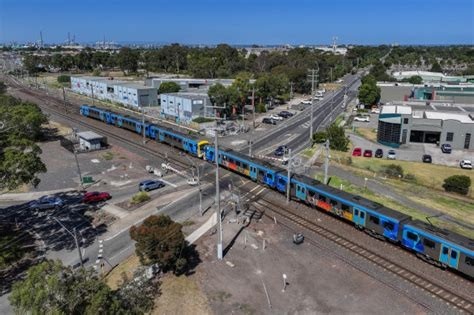
Williams Point Business Park
Williams Point is a premium industrial and retail business park in Williamstown North, featuring an 88-lot subdivision across 16.77 hectares. It accommodates small to mid-sized businesses with industrial and retail precincts, supported by high-growth residential areas and proximity to Melbourne CBD and Port of Melbourne.
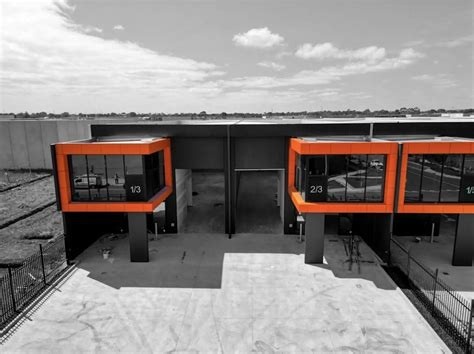
Dennis Reserve Multipurpose Facility
The Dennis Reserve Multipurpose Facility is a modern community center featuring two large multipurpose rooms with storage, a dedicated room for the tennis club with storage, a large kitchen, toilets, a lounge, and a business center. It serves as home to the Williamstown Central Tennis Club, Country Womens Association Williamstown, U3A Hobsons Bay-Williamstown, Conversations for the Curious, and Williamstown Senior Citizens. The building incorporates historical elements with images of HMAS Castlemaine, Nelson Place, and historic cannons on the exterior windows. This facility is part of the Dennis Reserve Master Plan, which also included open space upgrades such as an extensive climbing frame, landscaped areas, and spring rockers.
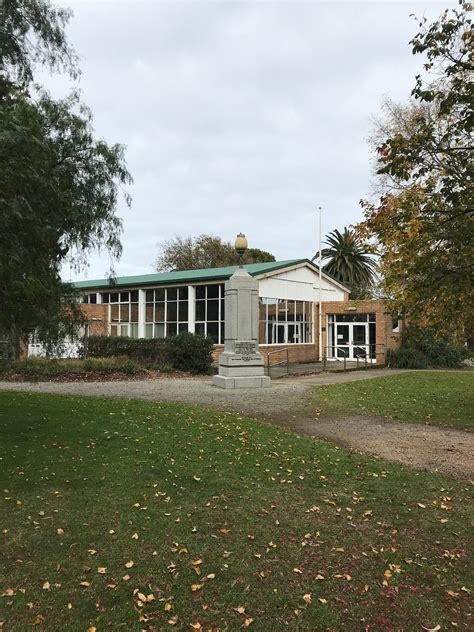
Williamstown Railway Station Level Crossing Removal - Ferguson Street
Level crossing removal project at Ferguson Street, Williamstown improving safety and traffic flow. Includes station upgrades and improved pedestrian access as part of the Level Crossing Removal Program.

Waterline Place
A bayside urban renewal precinct developed by AVJennings on the former Port Phillip Woollen Mills site in Williamstown. The masterplan is now complete and features the Merchant apartment building with ground-floor retail, a communal rooftop and gym, alongside architect-designed townhomes by Elenberg Fraser, connected by pedestrian-friendly streets and laneways.
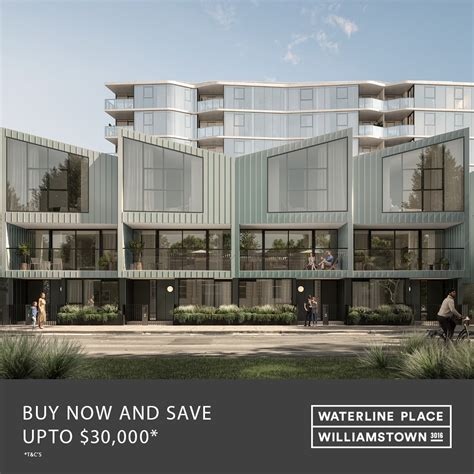
Elements
Architecturally designed by Baldasso Cortese, each residence includes 3 or 4 bedrooms with a separate home study, featuring luxe interiors, multiple dining spaces and dual living zones, private lifts, and outdoor entertaining - with select homes enjoying views of Port Phillip Bay and the Melbourne CBD. Located in an ideal pocket just moments from Port Phillip Bay and the lively Williamstown village, Elements offers a luxurious, expansive, and new way of living in Williamstown North, with access to vibrant cafes, boutique retail stores, Botanical Gardens, and family-friendly beaches.
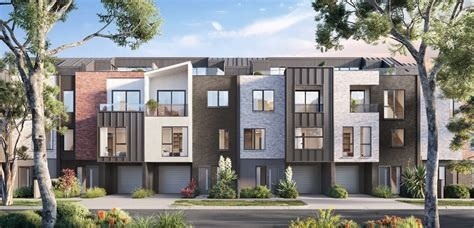
Employment
The exceptional employment performance in Williamstown places it among Australia's strongest labour markets
Williamstown has a highly educated workforce with professional services being strongly represented. The unemployment rate is 2.2% and there was an estimated employment growth of 5.5% in the past year.
As of June 2025, 10,301 residents are employed while the unemployment rate is 2.4%, lower than Greater Melbourne's rate of 4.6%. Workforce participation is similar to Greater Melbourne's at 64.1%. The leading employment industries among residents are professional & technical, health care & social assistance, and education & training. Professional & technical services show particularly strong specialization with an employment share of 1.3 times the regional level.
Conversely, health care & social assistance shows lower representation at 11.5% compared to the regional average of 14.2%. Many residents commute elsewhere for work based on Census data. Between June 2024 and June 2025, employment levels increased by 5.5% while labour force increased by 5.9%, causing the unemployment rate to rise by 0.3 percentage points. In contrast, Greater Melbourne experienced employment growth of 3.5% with a 0.5 percentage point rise in unemployment. State-level data from Sep-25 shows VIC employment grew by 1.08% year-on-year, with an unemployment rate of 4.7%. National employment forecasts from May 2025 project a growth of 6.6% over five years and 13.7% over ten years. Applying these projections to Williamstown's employment mix suggests local growth of approximately 6.8%% over five years and 13.8% over ten years, though this is a simple extrapolation for illustrative purposes and does not account for localized population projections.
Frequently Asked Questions - Employment
Income
The economic profile demonstrates exceptional strength, placing the area among the top 10% nationally based on comprehensive AreaSearch income analysis
In AreaSearch's aggregation of ATO data released for financial year 2022, Williamstown had a median taxpayer income of $68,768 and an average income of $106,120. These figures are notably higher than national levels and Greater Melbourne's respective median of $54,892 and average of $73,761. Based on Wage Price Index growth since financial year 2022, estimated incomes for March 2025 would be approximately $75,720 (median) and $116,849 (average). According to Census figures from 2021, Williamstown's household, family, and personal incomes rank between the 85th and 87th percentiles nationally. Income analysis shows that 30.1% of residents fall into the $4000+ bracket, with a total of 5,305 people. This differs from regional patterns where the $1,500 - 2,999 bracket dominates with 32.8%. Economic strength is evident as 41.6% of households have high weekly earnings exceeding $3,000, supporting elevated consumer spending. Housing accounts for 13.6% of income, and residents rank in the 88th percentile for disposable income. The area's SEIFA income ranking places it in the 9th decile.
Frequently Asked Questions - Income
Housing
Williamstown displays a diverse mix of dwelling types, with above-average rates of outright home ownership
Dwelling structure in Williamstown, as evaluated at the latest Census held on 27 August 2016, comprised 54.5% houses and 45.5% other dwellings including semi-detached homes, apartments, and 'other' dwellings. This compared to Melbourne metropolitan area's 68.7% houses and 31.3% other dwellings. Home ownership in Williamstown stood at 39.4%, with the rest of dwellings either mortgaged (34.3%) or rented (26.4%). The median monthly mortgage repayment in the area was $2,600, above Melbourne metro's average of $2,167, as recorded on 28 August 2019. Median weekly rent in Williamstown was $450, compared to Melbourne metro's $386 and national figures of $375 for rent and $1,863 for mortgage repayments, both recorded on 28 August 2019.
Frequently Asked Questions - Housing
Household Composition
Williamstown has a typical household mix, with a fairly typical median household size
Family households constitute 71.7% of all households, including 35.8% couples with children, 25.8% couples without children, and 9.1% single parent families. Non-family households comprise the remaining 28.3%, with lone person households at 26.7% and group households making up 1.6%. The median household size is 2.5 people, which aligns with the Greater Melbourne average.
Frequently Asked Questions - Households
Local Schools & Education
Williamstown shows strong educational performance, ranking in the upper quartile nationally when assessed across multiple qualification and achievement indicators
Educational attainment in Williamstown is notably high, with 45.0% of residents aged 15+ holding university qualifications. This compares to 30.4% nationally and 32.0% in the SA4 region. Bachelor degrees are most prevalent at 27.8%, followed by postgraduate qualifications (11.9%) and graduate diplomas (5.3%). Vocational pathways account for 24.4% of qualifications among those aged 15+, with advanced diplomas at 11.0% and certificates at 13.4%.
Educational participation is high, with 30.2% of residents currently enrolled in formal education. This includes 9.9% in primary, 9.3% in secondary, and 6.6% in tertiary education. There are seven schools operating within Williamstown, educating approximately 4,083 students. The area has significant socio-educational advantages and academic achievement (ICSEA: 1108), with a mix of four primary, two secondary, and one K-12 school. Williamstown functions as an education hub, offering 23.2 school places per 100 residents, which is significantly higher than the regional average of 15.3. This attracts students from surrounding communities.
Frequently Asked Questions - Education
Schools Detail
Nearby Services & Amenities
Transport
Transport servicing is high compared to other areas nationally based on assessment of service frequency, route connectivity and accessibility
Transport analysis shows 72 active transport stops in Williamstown, including a mix of train and bus services. These stops are served by 4 individual routes, which together provide 6,115 weekly passenger trips. Transport accessibility is rated excellent, with residents typically located 184 meters from the nearest stop.
Service frequency averages 873 trips per day across all routes, equating to approximately 84 weekly trips per stop.
Frequently Asked Questions - Transport
Transport Stops Detail
Health
The level of general health in Williamstown is notably higher than the national average with both young and old age cohorts seeing low prevalence of common health conditions
Williamstown shows above-average health outcomes for both young and elderly populations, with low prevalence of common conditions. Approximately 74% of its total population (12,990 people) has private health cover, compared to Greater Melbourne's 60.9%. Nationally, this figure stands at 55.3%.
The most prevalent medical conditions are asthma and arthritis, affecting 7.5% and 7.3% of residents respectively. 71.6% of residents report no medical ailments, compared to 70.7% in Greater Melbourne. As of March 2021, 21.0% of residents are aged 65 or over (3,704 people), higher than Greater Melbourne's 17.8%. Health outcomes among seniors are notably strong, outperforming the general population in health metrics.
Frequently Asked Questions - Health
Cultural Diversity
The level of cultural diversity witnessed in Williamstown was found to be above average when compared nationally for a number of language and cultural background related metrics
Williamstown's cultural diversity was above average, with 23.7% of its population born overseas and 15.6% speaking a language other than English at home. Christianity was the predominant religion in Williamstown, comprising 47.2% of the population. Notably, Judaism was overrepresented compared to Greater Melbourne, making up 0.2% versus 0.1%.
The top three represented ancestry groups were English (26.1%), Australian (21.4%), and Irish (9.9%). Some ethnic groups showed notable divergences: Croatian was equally represented at 1.4%, Maltese was overrepresented at 1.9% compared to the regional average of 3.4%, and Macedonian was underrepresented at 1.0% versus 1.4%.
Frequently Asked Questions - Diversity
Age
Williamstown hosts an older demographic, ranking in the top quartile nationwide
The median age in Williamstown is 45 years, which is significantly higher than Greater Melbourne's average of 37 years and Australia's median age of 38 years. Compared to Greater Melbourne, Williamstown has a higher proportion of residents aged 55-64 (15.8%) but fewer residents aged 25-34 (7.7%). According to the 2021 Census, the population aged 75-84 grew from 5.1% to 7.1%, while the 15-24 age group increased from 11.9% to 13.3%. Conversely, the 5-14 age group declined from 13.6% to 12.1%, and the 45-54 age group decreased from 16.6% to 15.3%. Looking ahead to 2041, demographic projections indicate significant shifts in Williamstown's age structure. The 75-84 age group is projected to grow by 65%, reaching 2,054 people from 1,246. Notably, the combined 65+ age groups will account for 67% of total population growth, reflecting the area's aging demographic profile. In contrast, both the 0-4 and 35-44 age groups are projected to decrease in number.
